Knowledge
Fiber Optic Internet Explained for Beginners
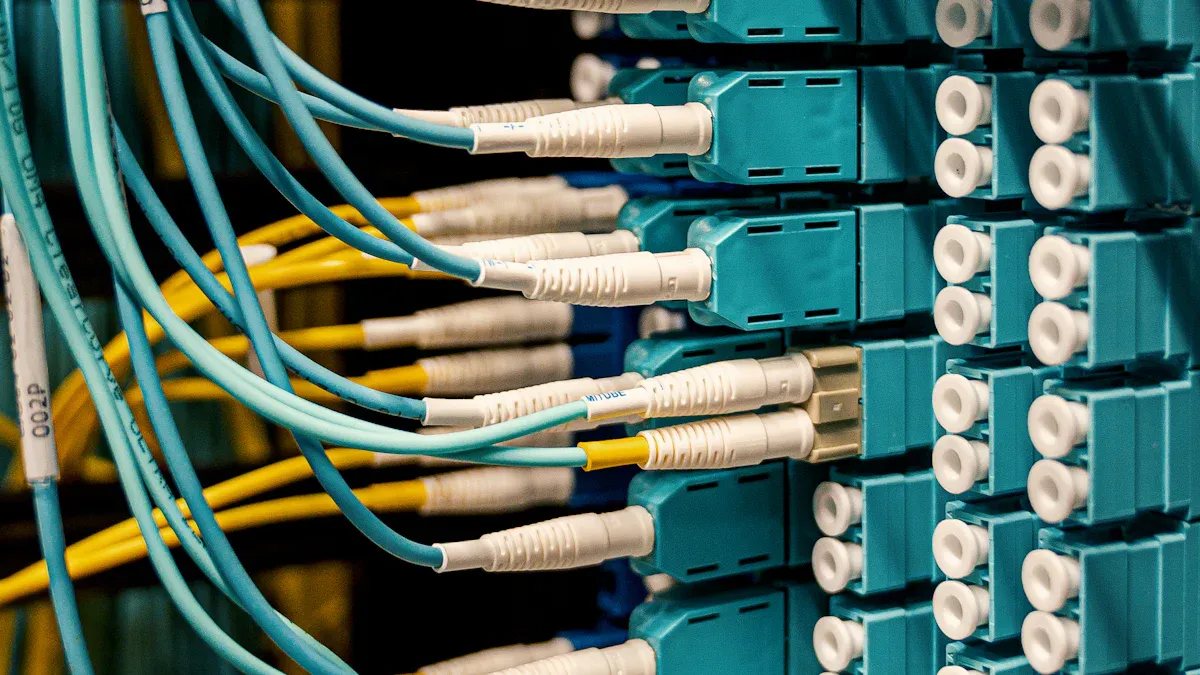
Fiber optic internet revolutionizes the way you connect to the digital world. This type of broadband uses light signals to transmit data through ultra-thin optical fibers, ensuring faster and more reliable internet access compared to traditional technologies. You benefit from its unmatched speed, which can reach up to 1 Gbps—ten times faster than the average speeds offered by DSL or cable. Its lower latency enhances your online experience, making activities like gaming and streaming seamless.
The adoption of fiber optic internet has surged globally. In 2023 alone, fiber internet accounted for 42.5% of all fixed broadband subscriptions. Countries like Greece witnessed an impressive 78.8% growth in access. In the U.S., active subscriptions reached 30 million, with projections suggesting this number could climb to 43 million by 2024. These statistics highlight the growing preference for fiber optic internet due to its scalability and reliability.
What Is Fiber Optic Internet?
Definition and key features
Fiber optic internet is a high-speed broadband technology that uses light signals to transmit data through thin strands of glass or plastic, known as optical fibers. These fibers are incredibly efficient, capable of transmitting data at speeds up to 70% of the speed of light. Unlike traditional copper cables, fiber optics maintain signal strength over long distances, ensuring consistent performance.
Key features of fiber optic internet include:
Symmetrical speeds: You can enjoy equal upload and download speeds, which is ideal for activities like video conferencing and cloud storage.
High bandwidth: Fiber optics support multiple devices and high-demand applications, such as 4K streaming and online gaming, without slowing down.
Reliability: Fiber networks are less prone to weather-related disruptions and electromagnetic interference, making them more dependable.
Future-proof technology: Fiber infrastructure can handle increasing data demands, ensuring it remains relevant as technology advances.
These features make fiber optic internet a superior choice for households and businesses that require fast, reliable, and scalable connectivity.
How it differs from traditional internet connections
Fiber optic internet stands out from traditional broadband technologies like DSL and cable in several ways. While DSL and cable rely on copper wires to transmit data, fiber optics use light pulses, which allows for significantly faster speeds and lower latency.
Metric | Fiber Optic | Traditional Internet |
|---|---|---|
Download Speed | 25 Mbps to 300 Mbps | |
Upload Speed | Symmetrical, up to 1 Gbps | 5 Mbps to 50 Mbps |
Latency | Very low (1-5 ms) | Higher (10-50 ms) |
Reliability | Excellent stability | More susceptible to interference |
In addition to these metrics, fiber optic internet offers a dedicated connection, meaning your bandwidth isn’t shared with neighbors. This ensures consistent performance, even during peak hours. Traditional internet connections, on the other hand, often experience congestion and slower speeds when multiple users are online.
Tip: If you frequently use data-intensive applications or have multiple devices connected at once, fiber optic internet is the best option to ensure smooth and uninterrupted performance.
How Fiber Optic Internet Works
Data transmission using light signals
Fiber optic internet relies on light signals to transmit data at incredible speeds. This process involves converting electrical signals into light pulses, which travel through optical fibers with minimal loss. Here’s how it works:
Signal Generation: A light source, such as a laser or LED, converts data into optical pulses.
Transmission: These light pulses travel through the core of an optical fiber. The cladding surrounding the core traps the light using total internal reflection, ensuring it stays within the fiber.
Reception: At the receiving end, photodetectors convert the light pulses back into electrical signals.
Decoding: The electrical signals are then decoded into their original form, such as text, video, or audio.
This method allows light to carry vast amounts of information over long distances with minimal attenuation. Unlike traditional copper cables, which lose signal strength over distance, fiber optic technology ensures consistent performance.
Note: The use of light signals makes fiber optic internet ideal for high-speed applications like streaming, gaming, and video conferencing.
Structure and components of optical fibers
The structure of optical fibers plays a critical role in their efficiency and reliability. Each fiber consists of three main components:
Component | Description |
|---|---|
Core | The central part of the fiber where light travels. Made of glass or plastic. |
Cladding | Surrounds the core and reflects light back into it, enabling total internal reflection. |
Coating | Protects the fiber from physical damage and environmental factors. |
The core and cladding work together to ensure that light signals remain confined within the fiber, even when it bends. This design minimizes signal loss and interference, making fiber optic cables highly reliable.
Fiber optic cables also support advanced technologies like wavelength-division multiplexing (WDM). This allows multiple data streams to travel simultaneously on a single fiber, significantly increasing bandwidth. As a result, fiber optic internet can handle heavy data loads without compromising speed or performance.
Tip: The durability and scalability of optical fibers make them a future-proof solution for growing internet demands.
Benefits of Fiber Optic Internet
Speed and performance advantages
Fiber optic internet delivers unmatched speed and performance, making it ideal for modern households and businesses. Unlike traditional broadband technologies, fiber optics transmit data using light signals, enabling speeds that can reach up to 1 Gbps or higher. This capability ensures that you can stream high-definition videos, download large files, and engage in online gaming without interruptions.
The impact of fiber optic internet on communities is profound. For example, a study in North Carolina found that access to fiber broadband correlated with improved student achievement, equivalent to reducing class sizes by one student. Additionally, fiber availability has been linked to increased local employment opportunities, as it enhances job search intensity and access to educational materials. The competition introduced by fiber networks also drives improvements in other technologies, resulting in faster speeds across the board.
Study Focus | Findings | Impact |
|---|---|---|
Fiber Broadband in North Carolina | Correlation with student achievement | Equivalent to lowering class sizes by one student |
Local Employment | Increases due to fiber availability | Enhanced job search intensity for educational materials |
Competition | Drives quality improvements in other technologies | Increased speeds in competing services |
Tip: If you rely on high-speed internet for work, education, or entertainment, fiber optic internet ensures you stay ahead of the curve.
Reliability during peak usage
Fiber optic internet offers unparalleled reliability, even during peak usage hours. Unlike cable internet, which often experiences congestion and speed fluctuations when multiple users are online, fiber optics maintain consistent performance. You can enjoy symmetrical upload and download speeds, allowing you to share large files, participate in virtual meetings, and stream 4K videos without any lag.
Fiber internet supports multiple high-bandwidth activities simultaneously, ensuring seamless experiences for all users in your household. Whether you’re gaming, attending online classes, or working remotely, fiber optic technology ensures low latency for real-time applications. This reliability makes it the preferred choice for families and businesses that demand uninterrupted connectivity.
Fiber optics do not experience peak hour congestion, unlike cable internet.
Symmetrical speeds for uploads and downloads ensure smooth performance for high-bandwidth activities.
Multiple users can stream, game, and work simultaneously without compromising speed.
Low latency supports real-time applications like video conferencing and online gaming.
Note: With fiber optic internet, you can count on consistent speeds and reliability, no matter how many devices are connected.
Scalability for future needs
Fiber optic internet is designed to meet the growing demands of modern technology. As your household or business expands, fiber optics provide the scalability needed to accommodate increasing bandwidth requirements. Emerging technologies like artificial intelligence (AI), machine learning, and the Internet of Things (IoT) rely on high-speed connections, which fiber optics can support effortlessly.
Modular designs in high-density fiber systems allow data centers to scale infrastructure without major overhauls. These systems can handle advanced technologies like quantum computing, ensuring they remain relevant for decades to come. For businesses, fiber optic solutions enable seamless integration of new employees, services, and applications, making it a future-proof investment.
Fiber optics provide scalability for businesses to meet increasing bandwidth demands.
Modular designs in fiber systems allow easy expansion without significant infrastructure changes.
Emerging technologies like AI, IoT, and quantum computing require higher bandwidth, which fiber optics can support.
Fiber networks ensure long-term relevance, adapting to technological advancements with ease.
Tip: Investing in fiber optic internet today ensures your connectivity can grow alongside your needs, whether you’re expanding your business or embracing new technologies at home.
Fiber Optic Internet vs. Other Internet Types

Comparison with DSL
Fiber optic internet offers a significant upgrade over DSL in terms of speed, reliability, and latency. DSL, which uses copper telephone lines, struggles to deliver consistent performance, especially over long distances. In contrast, fiber optic technology transmits data using light signals, ensuring faster speeds and minimal signal loss.
Feature | Fiber Internet | DSL |
|---|---|---|
Speed | 1 Mbps to 100 Mbps | |
Latency | Average 7 ms | Higher, varies with distance |
Reliability | Resistant to interference and weather | Fluctuates with distance |
Infrastructure | Advanced fiber optic cables | Existing copper telephone lines |
Installation Cost | Higher initial cost, better long-term value | Generally more affordable initially |
Fiber’s symmetrical upload and download speeds make it ideal for activities like video conferencing and cloud storage. DSL, on the other hand, often provides slower upload speeds, which can hinder tasks requiring real-time data sharing. Additionally, fiber’s low latency—averaging just 7 milliseconds—ensures smooth performance for gaming and streaming, while DSL’s latency increases with distance from the provider.
Tip: If you need reliable, high-speed internet for work or entertainment, fiber optic internet is a future-proof choice.
Comparison with cable
Cable internet offers moderate speeds but falls short when compared to fiber optic technology. While both can deliver high download speeds, cable often lacks symmetrical upload speeds, which are crucial for modern internet usage.
Internet Type | Upload/Download Symmetry | |
|---|---|---|
Fiber | 100 Mbps to 10 Gbps | Symmetrical |
Cable | Moderate speeds | Generally asymmetrical |
Fiber’s advanced infrastructure ensures consistent performance, even during peak hours. Cable internet, which relies on shared bandwidth, often slows down when multiple users are online. This makes fiber a more reliable option for households with multiple devices or users.
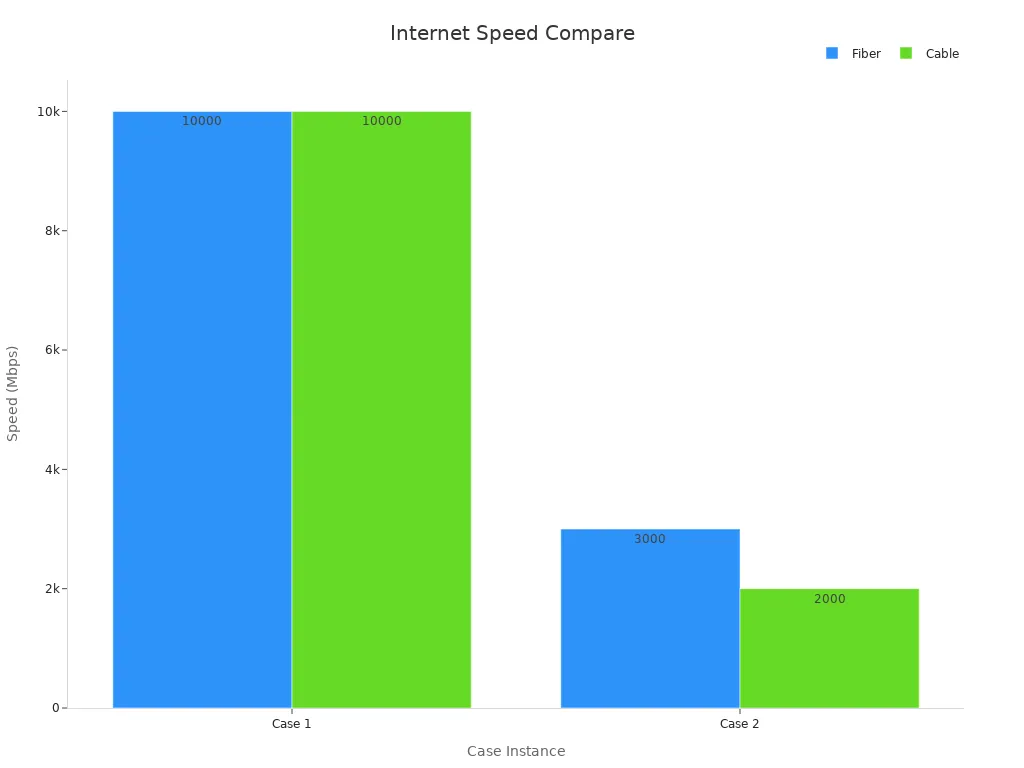
Additionally, surveys show that 71% of fiber users report satisfaction with their internet speeds, compared to 62% for cable users. This highlights fiber’s ability to meet the demands of modern connectivity.
Note: Fiber optic internet ensures consistent speeds and reliability, even during peak usage hours.
Why fiber optic internet outperforms dial-up
Dial-up internet, once a revolutionary technology, now pales in comparison to fiber optic internet. Fiber offers unmatched speed, reliability, and bandwidth, making it the superior choice for today’s digital needs.
Aspect | Fiber Optic Advantages | Dial-Up Limitations |
|---|---|---|
Bandwidth | Fiber has around 10,000 times more usable bandwidth than coaxial cables. | Limited bandwidth compared to fiber. |
Latency | Fiber signals can be transmitted with minimal delays for processing. | Higher latency due to slower data transmission. |
Noise Susceptibility | Fiber is much less susceptible to interference and noise. | More susceptible to noise, requiring complex error correction. |
Error Rates | Modern fiber-optic channels have very low error rates. | Higher error rates in dial-up connections. |
Symmetrical Speeds | Many fiber architectures offer fully symmetrical data speeds. | Asymmetrical speeds with limited upload capabilities. |
Fiber’s ability to transmit data at speeds up to 10,000 Mbps makes it 10,000 times faster than dial-up. Its low latency and resistance to interference ensure a seamless experience for streaming, gaming, and video conferencing. Dial-up, with its limited bandwidth and higher error rates, cannot compete with fiber’s advanced capabilities.
Callout: Upgrading to fiber optic internet transforms your online experience, offering speed and reliability that dial-up cannot match.
How to Get Connected to Fiber Optic Internet
Checking availability in your area
Before switching to fiber optic internet, you need to confirm its availability in your region. Fiber networks are expanding rapidly, but coverage varies depending on location. Several resources can help you identify whether fiber internet is accessible in your area.
Resource Name | Description |
|---|---|
Detailed map of fiber optic internet services in San Antonio. | |
Texas Fiber Internet Map | Provides coverage information for fiber internet services across Texas. |
National Broadband Map | Interactive map showing availability, speeds, and pricing of broadband services nationwide. |
Network Coverage Map | Comprehensive map showing the coverage of fiber networks. |
Regional Network Maps | Maps offering regional insights into fiber optic internet availability. |
These tools provide valuable insights into fiber coverage, helping you make informed decisions. If fiber isn’t available in your area yet, consider contacting local providers to inquire about future expansion plans.
Tip: Use interactive maps like the National Broadband Map to compare providers and find the best options for your location.
Choosing the right provider and plan
Selecting the right fiber optic internet provider involves evaluating several key criteria. Providers differ in speed offerings, reliability, and pricing, so it’s essential to choose one that aligns with your needs.
Criteria | Description |
|---|---|
Speed | Look for ISPs offering gigabit plans with speeds up to 1 Gbps to handle multiple devices and tasks. |
Reliability | Fiber optic is less prone to interference; check for network redundancy and uptime guarantees. |
Symmetrical Speeds | Essential for content creators; verify if the ISP offers equal download and upload speeds. |
Data Caps | Choose ISPs with unlimited data plans to avoid throttling and restrictions on usage. |
Customer Support | Research the ISP’s reputation for customer service, including response times and support channels. |
Scalability | Opt for ISPs that can upgrade speeds and bandwidth as your needs grow. |
Pricing | Evaluate the cost per Mbps and look for transparent pricing without hidden fees. |
When comparing providers, prioritize those offering symmetrical speeds and unlimited data plans. These features ensure smooth performance for activities like video conferencing and cloud storage. Transparent pricing and reliable customer support also play a crucial role in your decision-making process.
Note: AT&T Fiber provides gigabit speeds, symmetrical uploads and downloads, and dependable service, making it an excellent choice for high-performance internet.
Installation and setup process
Once you’ve chosen a provider, the installation process begins. Fiber optic internet installation involves several components, including the fiber drop, optical network terminal (ONT), and customer premises equipment (CPE). Labor costs and conduit expenses vary, with installation typically costing $1 to $6 per linear foot.
To ensure a smooth setup, follow these best practices:
Inspect and clean fiber connections regularly to avoid signal degradation.
Use IEC grading standards to verify the cleanliness of fiber connectors.
Repair damaged fiber cables promptly to maintain network integrity.
The installation process offers several benefits:
Accelerated internet connectivity speeds.
More dependable network links.
Greater capacity for bandwidth.
After installation, your provider will activate the service and test the connection to ensure optimal performance. You can then enjoy the advantages of fiber optic internet, including faster speeds and reliable connectivity.
Tip: Schedule installation during off-peak hours to minimize disruptions and ensure technicians have ample time to complete the setup.
Fiber optic internet offers unmatched speed, reliability, and scalability, making it the gold standard for modern connectivity. Its ability to transmit data 65,000 times faster than copper cables ensures seamless performance for streaming, gaming, and remote work. The fiber optics industry, valued at $8.07 billion in 2023, continues to grow as demand for high-bandwidth applications rises.
Key Advantages | Details |
|---|---|
Speed Advantage | Fiber optics can transmit data 65,000 times faster than copper cables. |
Global Success | Monaco has achieved 100% fiber-optic coverage, showcasing its potential. |
Future Potential | The fastest recorded speed is 1.7 Petabits, hinting at future advancements. |
Tip: Explore fiber optic options in your area to future-proof your internet experience and unlock the full potential of high-speed connectivity.

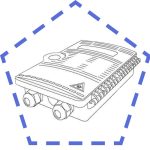 Fiber Optic Termination Boxes
Fiber Optic Termination Boxes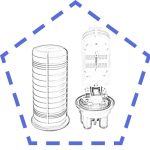 Fiber Optic Splice Enclosures
Fiber Optic Splice Enclosures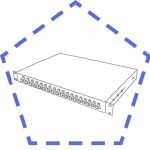 Fiber Patch Panels
Fiber Patch Panels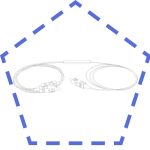 PLC Splitters
PLC Splitters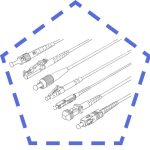 Fiber Optic Pigtails
Fiber Optic Pigtails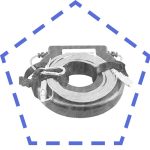 OTDR Launch Cables
OTDR Launch Cables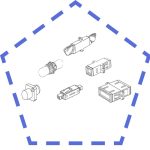 Fiber Optic Adapters
Fiber Optic Adapters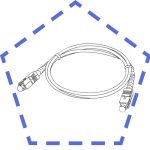 Fiber Optic Patch Cords
Fiber Optic Patch Cords